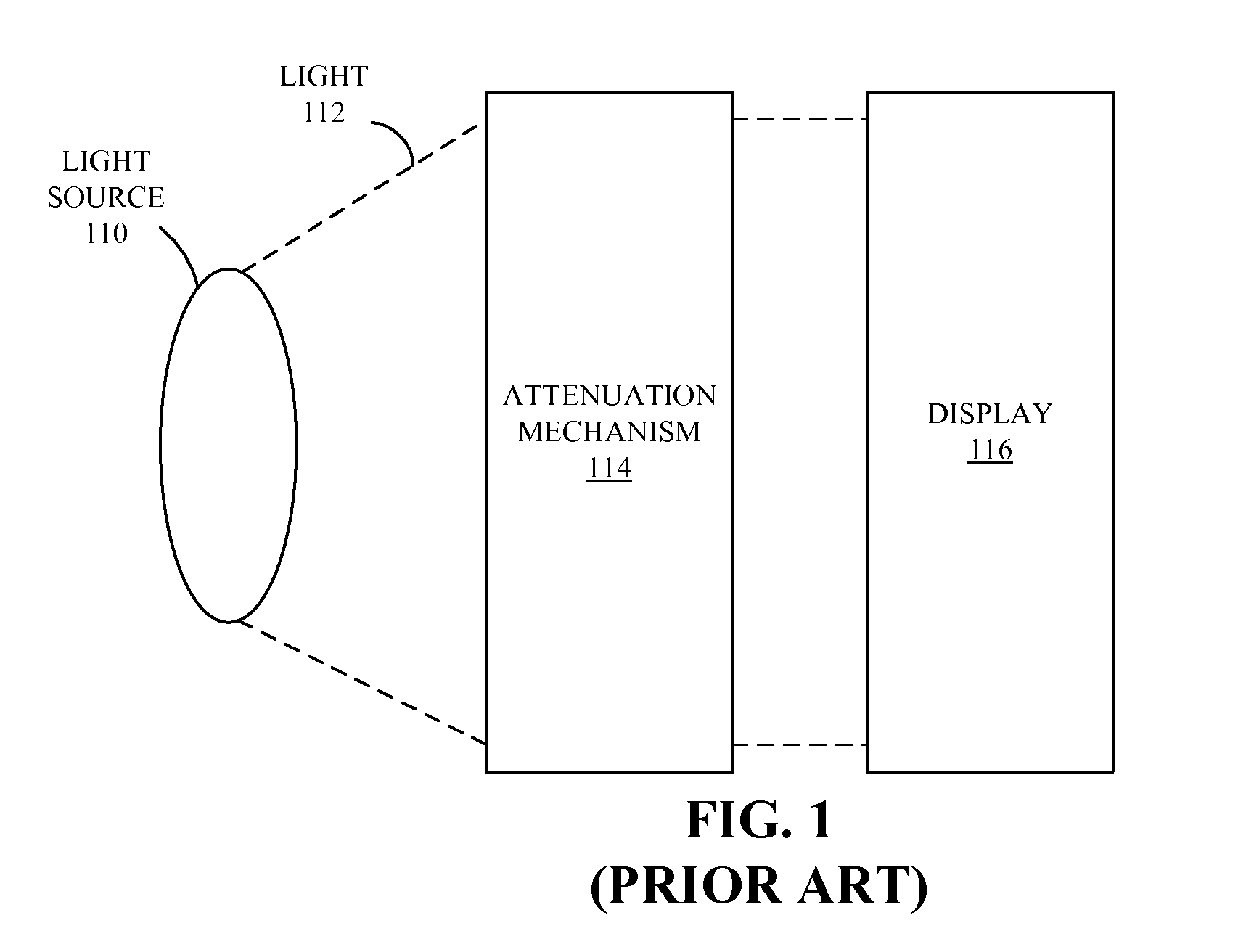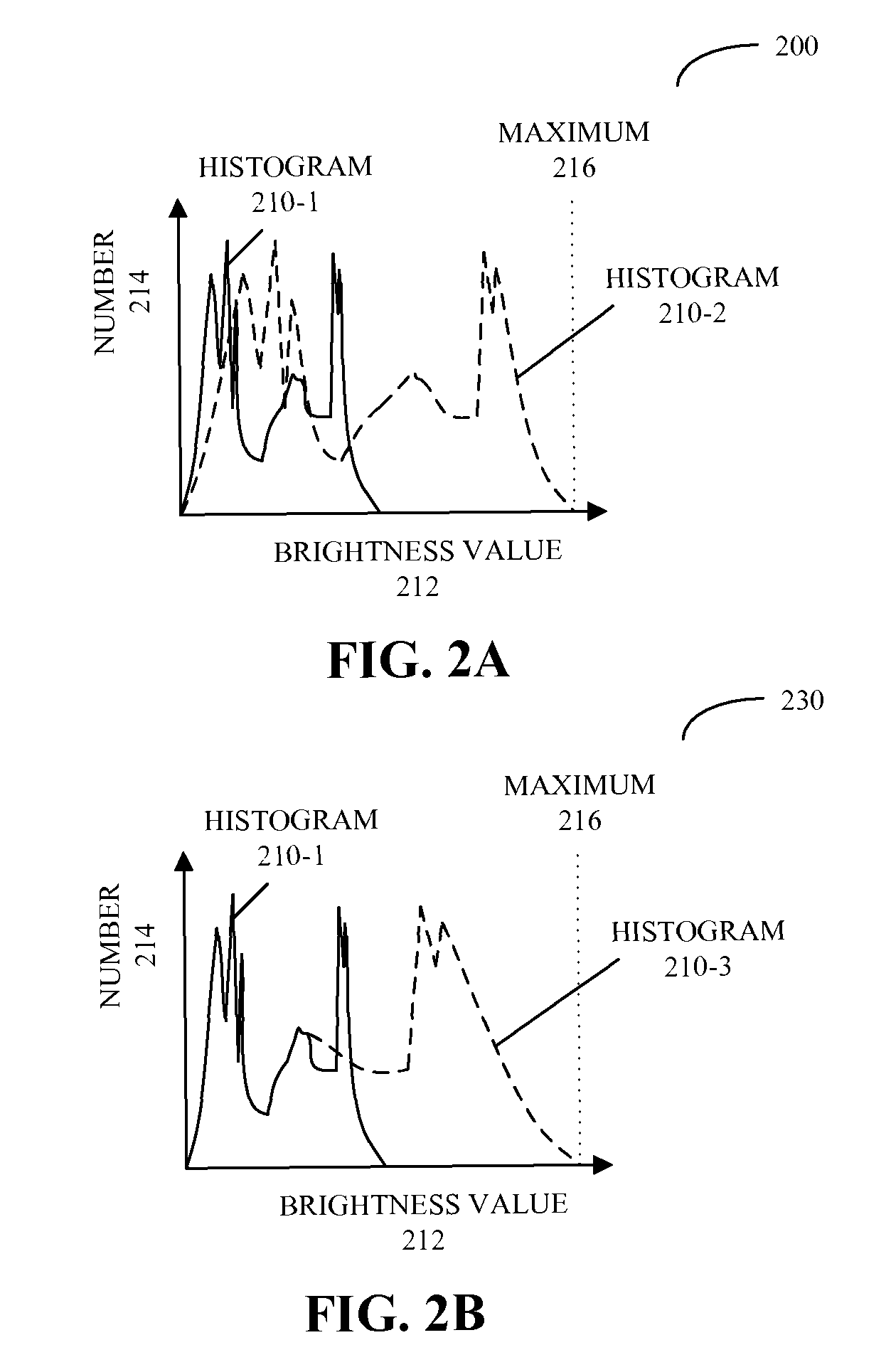Error metric associated with backlight adaptation
a backlight adaptation and error metric technology, applied in the field of dynamically adapting light sources for displays, can solve the problems of reducing battery life, underexposure, energy inefficiency, etc., and achieve the effects of reducing distortion, reducing brightness values, and reducing the scaling of brightness values
- Summary
- Abstract
- Description
- Claims
- Application Information
AI Technical Summary
Benefits of technology
Problems solved by technology
Method used
Image
Examples
embodiment 700
[0092]FIG. 7A presents a block diagram illustrating an embodiment 700 of a circuit 710. This circuit receives video signals 712 (such as RGB) associated with a given video image in a sequence of video images and outputs modified video signals 716 and an intensity setting 718 of the light source for the given video image. Note that the modified video signals 716 may include scaled brightness values for at least a portion of the given video image. Moreover, in some embodiments the circuit 710 receives information associated with video images in the sequence of video images in a different format, such as YUV.
[0093]In some embodiments, the circuit 710 receives an optional brightness setting 714. For example, the brightness setting 714 may be a user-supplied brightness setting for the light source (such as 50%). In these embodiments, the intensity setting 718 may be a product of the brightness setting 714 and an intensity setting (such as a scale value) that is determined based on the hi...
embodiment 730
[0095]FIG. 7B presents a block diagram illustrating an embodiment 730 of a circuit 740. This circuit includes an interface (not shown) that receives the video signals 712 associated with the video image, which is electrically coupled to: optional transformation circuit 742-1, extraction circuit 744, and adjustment circuit 748. Note that the optional transformation circuit 742-1 may convert the video signals 712 to the linear brightness domain, for example, using one of the transformations 614 (FIG. 6A). Moreover, note that in some embodiments the circuit 740 optionally receives the brightness setting 714.
[0096]Extraction circuit 744 calculates one or more metrics, such as saturation values and / or a histogram of brightness values, based on at least some of the video signals, e.g., based on at least a portion of the video image. In an exemplary embodiment, the histogram is determined for the entire video image.
[0097]These one or more metrics are then analyzed by analysis circuit 746 t...
PUM
 Login to View More
Login to View More Abstract
Description
Claims
Application Information
 Login to View More
Login to View More - R&D
- Intellectual Property
- Life Sciences
- Materials
- Tech Scout
- Unparalleled Data Quality
- Higher Quality Content
- 60% Fewer Hallucinations
Browse by: Latest US Patents, China's latest patents, Technical Efficacy Thesaurus, Application Domain, Technology Topic, Popular Technical Reports.
© 2025 PatSnap. All rights reserved.Legal|Privacy policy|Modern Slavery Act Transparency Statement|Sitemap|About US| Contact US: help@patsnap.com



